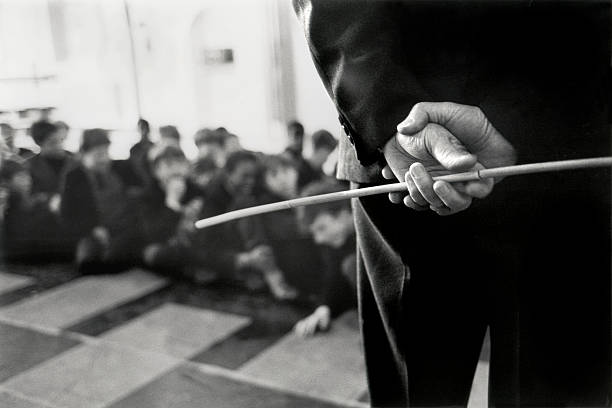Corporal punishment is an incredibly debatable practice; despite its cruelty, and the best efforts made by the legislation and society to shake it off, the issue continues to impact millions of children across India. Characterized by the UN Committee on the Rights of the Child, it is called any physical force that is inflicted as a form of punishment to cause pain or inconvenience upon a child; that includes hitting, smacking, and even psychological harassment that would negatively harm a child’s well-being. The dimension of corporal punishment in India can be understood considering its types, justifications, effects, legal provisions, and efforts that have been taken to reduce the impact.
Types and Forms of Corporal Punishment
Variations of corporal punishment applied in India include physical and psychological types. Physical punishment includes those acts meant to inflict pain or discomfort through hitting with hands or some tools like sticks or belts. Coercive practices are also covered, whereby children are been made to assume uncomfortable unnatural postures—made to hold their ears through their legs or are confined in some enclosed spaces within the precincts of the school. On the other hand, mental harassment is a type of non-physical abuse that may be described as verbal abuse, derogatory comments, and instigation through an atmosphere of emotional distress.
Justification and Legal Framework
However, although international consensus opposes the use of corporal punishments, those often taken as reasons to apply in the name of discipline and tradition. Legal provisions in India, however, have evolved to address this matter. The use of corporal punishments is strictly prohibited by the Right to Education Act of 2009. In this regard, the Act goes on to specify further that any form of physical or mental harassment is liable to be an offense. Moreover, the Juvenile Justice (Care and Protection of Children) Act, 2015 also gave protection against physical and mental abuse with correlative penalties against those who abused them.
However, legal ambiguities at times make the very thin line between discipline and abuse blurry with cultural beliefs. Cases like Ambika S. Nagal Vs State of Himachal Pradesh, 2020, and that of Rajan Vs Sub-Inspector of Police, 2014, have also shown judicial interpretations that have differed in the treatment of corporal punishment and point out why consistent enforcement and creation of awareness about children’s rights is necessary.
Effects of Corporal Punishment
Corporal punishment has a deep impact on the child at both physical and psychological levels. Besides causing physical injuries, which may range from bruises to serious damage, corporal punishment also inflicts a blow to the child psychologically. Children subjected to corporal punishment have shown increased anxiety, depression, and lowered self-esteem, which adversely impacts their academic and social life. According to the World Health Organization, n.d., the effects of corporal punishment are immense and diverse. Moreover, exposure to violence through corporal punishment increases cycles of aggression and is associated with behavioral problems in the immediate future, showing higher rates for drug abuse.
Constitutional and International Perspectives
India’s constitution and its international obligations both focus on the welfare of children. Provisions of Articles 21 A, 24, 39 (e), 45, and 51A (k) all highlight the state’s role to protect the child from abuse and let a child grow holistically. It is also noteworthy in this part that the fact that India signed on the international document and framework of the UN Convention on the Rights of the Child (UNCRC) displayed these legislative and social perspectives bound to present the well-being of a child as well (UN Convention on the Rights of the Child, 1989).
Institutional Framework and Efforts
This is the kind of implementation that is the sole prerogative of organs like the National Commission for Protection of Child Rights (NCPCR) and the enforcement of the provisions that are enshrined in the legislation related to the protection of children. The NCPCR, being a statutory and independent body under the CPCR Act, 2005, is required to make consultations related to policies that would safeguard the rights of children and investigate any complaints concerning those said policies’ violation of their implementation. Its instructions are required to be carried out to ensure that systems are installed in schools to discourage the use of corporal punishment, and the children could study in a safe and secure environment.
Conclusion
While it is agreed that much progress has been made toward recognizing corporal punishment in India, a challenge remains. Institutional mechanisms and legal frameworks are important weapons, but cultural attitudes and educational practice based on them are far from synchronically updated with legal evolution. Efforts at education, children’s empowerment to report abuses, and the inculcation of a culture of non-violence and respect in schools and homes have to be continued. Only if concerted efforts are taken will India have the assurance that every child grows up in an environment that allows physical, emotional, and intellectual growth to flourish without the shadow of corporal punishment.
Corporal punishment is not just a legal or education-sector concern; it is a human rights issue that requires sustained attention and action from all sectors of society.
By Aanya Bhargava (Intern)


Offering a global gateway to superior medications.
where to get cheap lisinopril for sale
They bridge global healthcare gaps seamlessly.
Their worldwide services are efficient and patient-centric.
gabapentin mouth blisters
The ambiance of the pharmacy is calming and pleasant.
Every visit reaffirms why I choose this pharmacy.
order cheap cipro without rx
Always responsive, regardless of time zones.
Their global presence ensures prompt medication deliveries.
where can i get generic clomid no prescription
They consistently go above and beyond for their customers.
Their staff is always eager to help and assist.
where can i buy generic cytotec price
A modern pharmacy with a traditional touch of care.